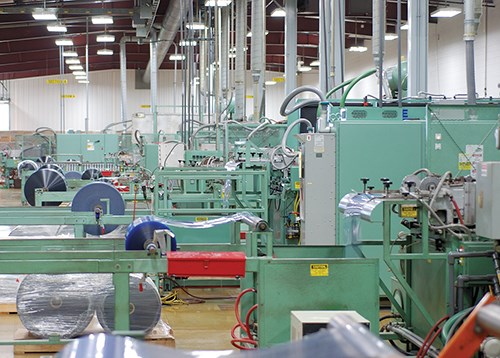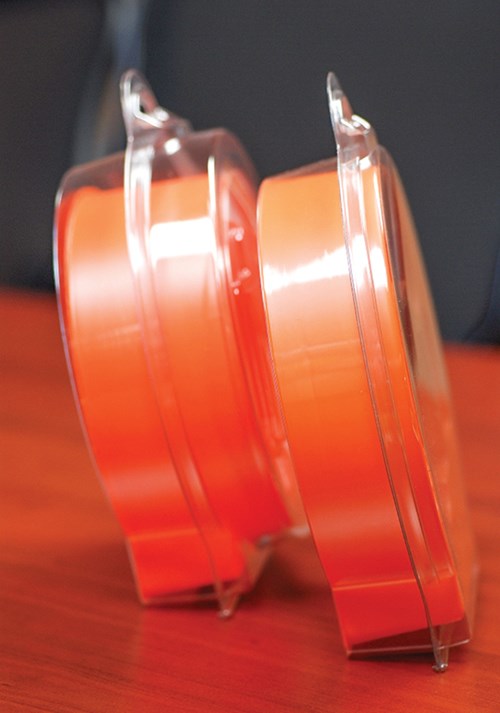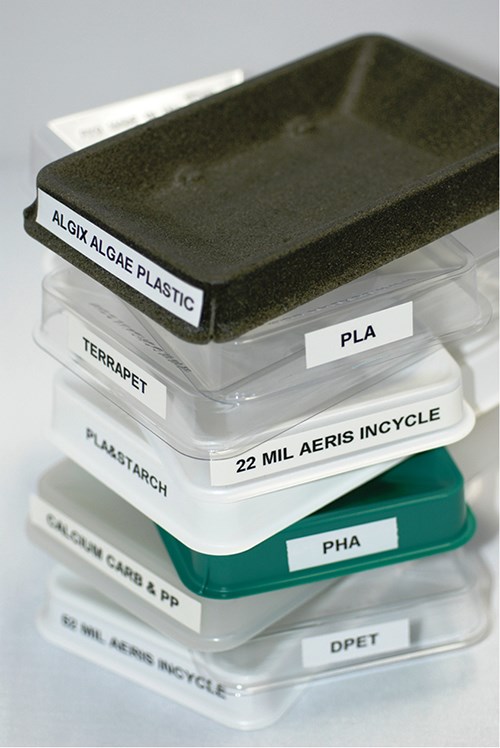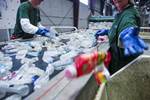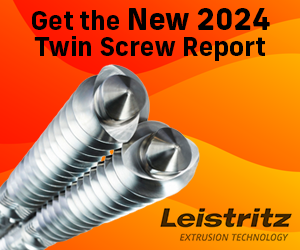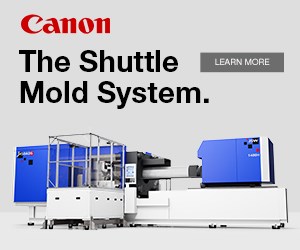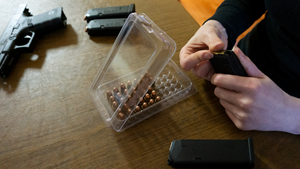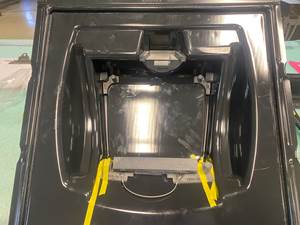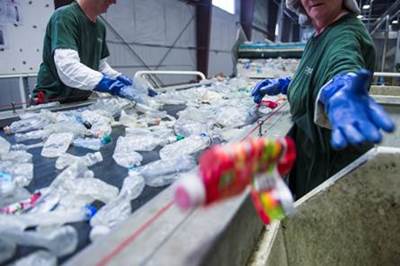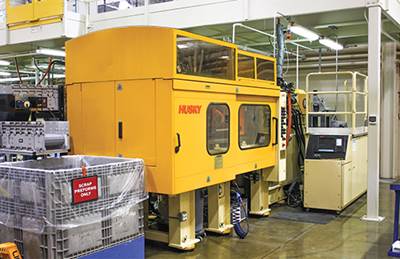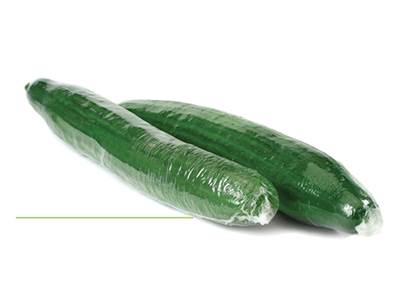Sustainable Thermoforming: Efforts at Dordan
Family-owned former has been in the forefront of sustainable thermoforming and package design for years. Has it been worth the effort?
It won’t take more than a cursory look to grasp the essence of Dordan Manufacturing. It’s a successful, family-owned, thin-gauge thermoformer whose bread-and-butter, Midwestern-honed core values are the same as they were when it opened shop more than 50 years ago: Furnish customers with high-quality, value-added product that’s priced competitively.
It’s a tried-and-true formula that’s served Dordan well throughout its history. The company, based in a 50,000 ft² plant in Woodstock, Ill., employs about 100 people, has annual sales of approximately $18 million to $22 million, and has seen steady, mostly double-digit, growth even through difficult times.
Continue looking and you’ll also see a high-tech operation that uses the 3D and solid-modeling software to design a new package from scratch, take an existing design and add features to it, or replicate existing designs. You’ll see a company that builds all of its own molds from aerospace-grade aluminum in a Prototype & Production Tooling Department equipped with four state-of-the-art CNC machines. Its trim headers, die build-up, locators, and assist plugs are machined in the same way. Die boards for cutting dies are burned on a CNC laser and the steel rule is bent, notched, and cut by a precision automated machine.
Look further and you’ll see a former with 11 state-of-the art machines furnished by Lyle Industries, Beaverton, Mich., that can convert 75 million lb of sheet/yr (or 50,000 lb/shift) into clamshells, blisters, trays, and other packaging components for consumer products, consumer electronics, housewares, hardware, health and beauty products, and more. Dordan runs sheet made from a wide range of materials, including PET, PP, PS, HIPS, PVC, and ABS.
Dig deeper and you’ll see a business where quality is a continuous objective. Dordan is working towards ISO9001:2008 certification. The firm’s reject rate is 72.8 ppm, or 0.0073%, for a cpk of 1.32. Dordan runs first-article inspection of all parts produced and takes a random sampling during production, allowing it to chart the data and eliminate any inconsistency of part performance or dimension. Dordan has also established a Material Acceptability Protocol for incoming sheet that allows it to minimize thermoforming flaws resulting from inconsistent materials.
But squint a little, and you’ll see a fast and nimble company that makes decisions quickly and will take on risk if it feels that it’s the right thing to do.
For a company Dordan’s size to take a lead position on an issue such as sustainability is indeed risky. But that is the position that Dordan finds itself in, fueled by the tireless efforts and boundless enthusiasm of Chandler Slavin, who joined brothers Sean, Aric, and father and CEO Daniel Slavin at the company in 2009. And it’s this leadership role that has led Dordan, ironically, to question whether sustainability, is, well, sustainable as a business model.
Sustainability is a serious, complex and still-evolving issue with elements that touch virtually every aspect of a processor’s business—from the materials they purchase to the power that runs their machines, to how they handle their in-house scrap, to the products that get boxed and shipped out the door, to what they are doing to get those products back once the consumers are done with them.
Sustainability is a concept that many processors of packaging products are still trying to wrap their arms around, because there are so many means to that particular end. You’d be hard pressed to find a website in the plastics industry without a sustainability link on it. And the verbiage that link points to varies greatly, as does the substance behind it. That said, more than a handful of processors like Dordan, where Ms. Slavin serves the dual role of marketing and sustainability coordinator, have hired people to lead their sustainability efforts.
ALL IN ON SUSTAINABILITY
But it would be hard to find anyone who has been more energetic and visible in making sustainability part of her company’s culture than Ms. Slavin. She came to the company with a bit of hands-on thermoforming experience gained from working summers and after school at the family business over the years. Despite a “non-technical” academic background—she graduated summa cum laude with a degree in ethics and social justice from DePaul University—Ms. Slavin didn’t just dip her toe into the sustainability pool, she dove in head-first.
At her initiative Dordan joined the Sustainable Packaging Coalition (SPC), an industry group of packaging suppliers (plastics, paper, aluminum, etc.), food companies, OEMs, materials suppliers, and more. There, she found that thermoformed packaging was not recycled in most communities, and visited various waste-management facilities to find out why.
Being a 20-something, Ms. Slavin’s next move was to launch a blog. People noticed, notably the person who was Walmart Canada’s sustainable packaging coordinator and who asked Ms. Slavin to serve as co-leader of the PET Subcommittee of Walmart’s Material Optimization Committee. This working group was dedicated to increasing PET recycling in Canada, including PET thermoforms.
Six months later, she wrote a white paper, Recycling Report: the Truth about Clamshell/Blister Recycling with Suggestions for the Industry, which outlined the main obstacles keeping thermoforms from being recycled in America along with options to overcome those obstacles. While the report managed to ruffle a few feathers in the world of PET recycling, Ms. Slavin nevertheless presented her findings at numerous conferences. And interestingly enough, the most recent Report on Postconsumer PET Container Recycling Activity from National Association for PET Container Resources (NAPCOR) and the Association of Postconsumer Plastic Recyclers (APR) included PET thermoforms for the first time, reporting that 45 million lb of them were recycled in 2011.
“During this time Dordan implemented sustainability tools and services that have helped us work with our clients to design more sustainable packaging systems,” states Ms. Slavin. One of these is called COMPASS (for Comparative Packaging Assessment). Developed by the Sustainable Packaging Coalition, it is an online program for packaging designers and engineers to assess the human and environmental impacts of their packaging designs.
“We subscribed to the Walmart Scorecard Modeling 3.0 software, where we learned how to design packaging that would achieve better Scores. We created a 4-Step Design for Sustainability (DFS) Process, where customers were provided with an easy approach to facilitate quantifiable environmental savings. And we developed what we call the Bio Resin Show N Tell, which now contains nine alternative resins, like PLAs, PHAs, Bio-PETs, etc., and includes associated specs and a cost analysis.”
Most of these efforts have borne fruit. For example, Dordan put elements of the DFS process (lower product-to-package ratio, materials selection, materials reduction, and sustainability documentation) to use in a package redesign project for Go Phone. To reduce the product-to-package ratio, it changed the clamshell from convex to flat, thereby eliminating the snap-on lid. It reduced the gauge of the clamshell from 0.030 in. to 0.025 in. and that of the inner tray from 0.045 in. to 0.035 in.
Using the Walmart Scorecard Modeling software, a tool that allows companies to find potential sustainability improvements in their product packaging, Dordan demonstrated that the redesign resulted in a 29% cost savings versus the previous package. For the same amount of product sold, the change reduced the total packaging weight by 25% and reduced CO2 emissions by 25%. The slimmer design further allowed for more products per pallet and an increased number of units per foot of retail space.
Ms. Slavin continues to attend and speak at SPC and other sustainability and packaging conferences. Her most recent white paper, How to Assess Sustainable Packaging: an Overview of the Tools and Resources Available, is available on the Dordan website.
WHAT NOW?
It’s been said that those leading the charge into battle are most likely to experience the brunt of the enemy’s defense. In the case of sustainability, though, there is no enemy. Big-box retailers are pushing OEMs to comply. OEMs in turn are demanding sustainable solutions from their packaging suppliers. But all of this costs money, and who is going to pay?
Says Ms. Slavin, “Internally we began to discuss the repercussions that our efforts have made on Dordan’s bottom line. While it has earned us publicity and enhanced our brand identity as thought leaders, it is difficult to quantify the ROI. Often I hear from our sales team that the people they are selling to are not really interested in sustainability, just cost.
“While our corporate blog had gotten a ton of traffic, it wasn’t the ‘right’ type of traffic insofar as generating qualified leads is concerned,” she concedes. “While we had hundreds of people download our white papers on sustainability, they were usually competitors, suppliers, or consultants. Suddenly I found myself at a crossroads, where the initial idealism of ‘sustainability’ began to give way to the reality of business. Dordan has weathered the economic storm and business is thriving. Now I ask: How much is this the result of our sustainability efforts, and how much the result of 50 years’ experience providing quality thermoformed packaging solutions?”
Ms. Slavin has to ponder another question: “If sustainability for our customers is not a purchasing priority, if consumers won’t pay more for sustainable products and packaging, and if we are but a fraction of the contribution to the carbon footprint associated with the products we package, why do we continue to invest so heavily in it?”
It might be a while before the answers to her questions are answered. The market for sustainable packaging—despite the forces presumed to be behind it—is embryonic. Perhaps some encouraging news can be found in November 2012’s Regeneration Consumer Study, an online study that concluded that two thirds of consumers in six countries recognize the need to consume less and purchase products that are good for the environment and society.
The survey was conducted by the Regeneration Roadmap, a joint project of Global Scan, a research firm headquartered in Toronto; and Sustainability, a think tank and strategic advisory firm headquarted in London. The results were compiled from 6224 consumers across Brazil, China, India, Germany, the U.K., and the U.S.
Still another study, this one by MIT Sloan Management Review and the Boston Consulting Group, showed that North American companies are lagging behind firms from other countries in integrating sustainability models into their business. Compared with companies in other countries, North American firms have the lowest rate of sustainability-focused business-model innovation and the fewest business-model innovators who said that “sustainability activities added to their profit,” according to the study.
A fourth annual study, called The Innovation Bottom Line, was based on a survey of 2600 executives and managers from companies around the world. Overall, it found nearly half of the companies have changed their business models as a result of sustainability opportunities, a 20% jump over 2011.
Related Content
A Processor's Perspective: What's Driving Growth in Heavy-Gauge Thermoforming
Key factors for the progress are innovative materials, advanced automation and precision engineering.
Read MoreNovel ‘Clamtainer’ Extends Thermoformer's Reach in Packaging
Uniquely secure latching expands applications for Jamestown Plastics’ patented clamshell package design.
Read MoreThermoformer Maximizes Productivity with 3D Printing
Productive Plastics has created an extensive collection of 3D printed manufacturing aids that sharply reduce lead times.
Read MoreMaking Gains in the Drain Game
AWD blends extrusion and thermoforming technologies with plenty of home-brewed equipment and processes to keep water away from where it isn’t supposed to be.
Read MoreRead Next
Sustainable Sheet: Placon Closes the Loop on PET Recycling
Placon reprocesses up to 12,000 lb/day of PCR PET to produce its EcoStar line of sheet.
Read MoreSustainable Injection Molding: Amcor and the Big Picture
How the world’s biggest producer of PET packaging measures the environmental footprint of its operation.
Read MoreThe Business Advantage of Sustainability
Companies promote their sustainability commitment in various ways, but beneath the promises and promotional materials should be a true corporate commitment to sustainability goals that provide meaningful environmental, economic, and social benefits.
Read More


